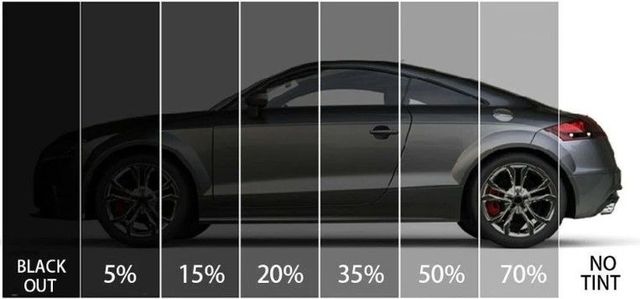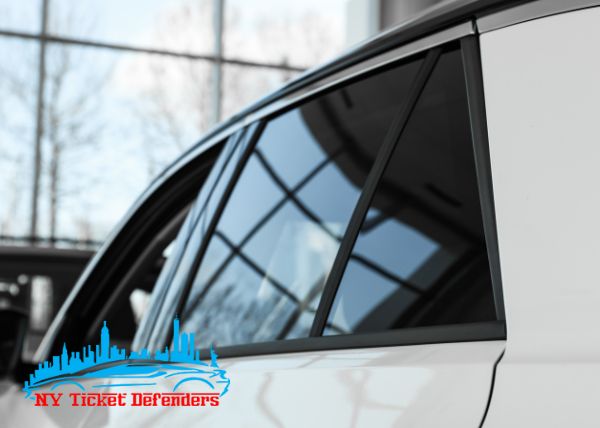Why Automobile Window Tinting is a Must-Have for Modern Cars
Why Automobile Window Tinting is a Must-Have for Modern Cars
Blog Article
Window Tinting Regulations and Guidelines: What You Need to Know Before Tinting Your Vehicle
Prior to proceeding with home window tinting for your lorry, it is necessary to acquaint yourself with the varied legislations and standards that control this technique across various states. These guidelines determine the permitted levels of tint darkness, commonly measured by visible light transmission (VLT) portions, and consist of specific specifications for front windshields focused on ensuring roadway safety and security. Additionally, particular jurisdictions might provide medical exceptions for people with qualifying conditions. Understanding these complexities can save you from possible legal implications, yet what are the specific rules in your state?
Overview of Home Window Tinting Laws
Window tinting laws are regularly subject to variation throughout different jurisdictions, reflecting neighborhood regulations and safety and security factors to consider. These legislations determine the permitted levels of color darkness and reflectiveness on automobile windows, making certain that chauffeurs maintain sufficient presence while also securing against unsafe UV rays and heat.
Most guidelines categorize window tinting based on the Visible Light Transmission (VLT) percentage, which shows the amount of light that can pass through the window. Generally, lower VLT percents symbolize darker tints. Regulations often set apart in between the front, side, and rear home windows, with more stringent restrictions related to the front windshield to improve safety and security for both the vehicle driver and other road customers.
Compliance with home window tinting guidelines is essential, as offenses can result in penalties, compulsory removal of the tint, and possible boosts in insurance coverage costs. It is important for car proprietors to acquaint themselves with neighborhood legislations prior to proceeding with window tinting setups.
State-by-State Color Rules
Recognizing the specific window tinting policies in each state is important for automobile proprietors seeking to follow the legislation. Each state in the U.S. has established its own collection of regulations controling home window tinting, which can differ considerably. These guidelines often determine the allowable levels of tint darkness, the kinds of windows that can be tinted, and any type of medical exemptions that may apply.
For example, states like California have stringent restrictions on tint darkness for front windows, while others, such as New Mexico, might enable darker tints. In addition, certain states mandate specific visibility percents for different windows, consisting of the windshield, front side windows, and back windows. It is critical for vehicle owners to familiarize themselves with their state's legislations to stay clear of possible fines or penalties.
Additionally, some states might require a certification sticker label to be positioned on colored home windows, indicating conformity with state laws. Failure to stick to these regulations not just runs the risk of lawful consequences but can also influence safety and security and visibility while driving. Therefore, automobile owners ought to conduct thorough research or seek advice from local authorities to guarantee full understanding and conformity with state-by-state color regulations.
Allowed Tint Levels and Types
Many automobile proprietors might be stunned to discover that enabled color degrees and kinds vary widely across various states. Each state has actually established its own regulations regarding the allowable darkness and reflectivity of home window tint, usually determined by Visible Light Transmission (VLT) percents. VLT describes the amount of light that can pass via the tinted windows; hence, a reduced percentage suggests a darker color.

In addition, the kinds of tint products allowed can differ, with some states restricting mirror-like or metallic surfaces. It is important for automobile owners to acquaint themselves with their state's details laws to guarantee conformity. Non-compliance can cause penalties, compulsory elimination of the tint, or various other legal repercussions, making it essential to comprehend these regulations before proceeding with setup.
Medical Exceptions for Tinting
While not all states give allocations for medical exceptions relating to home window tinting, those that do acknowledge the need for specific people to enhance exposure and comfort because of clinical problems. Numerous clinical problems, such as lupus, skin cancer cells, and specific eye conditions, can render people specifically conscious sunshine. Consequently, these individuals might need darker tints to shield themselves from damaging UV rays and glow.

It is necessary to keep in mind that despite a medical exception, there might still be limitations on the degree of tint permitted. Compliance with state legislations makes sure that individuals are both safeguarded and within lawful limitations. Those considering clinical exemptions should contact their regional Department of Motor Automobiles or comparable authority to recognize the treatments and needs necessary to obtain an exception properly.
Charges for Non-Compliance
Falling short to follow home window tinting regulations can result in considerable charges, which vary by state. Police are encouraged to issue citations for cars that do not adhere to the defined tinting laws. These charges commonly consist of fines, which can range from modest total up to several hundred dollars, depending on the extent of the offense and the state in inquiry.
In some territories, repeated offenses might cause rising penalties or additional charges, such as mandatory court looks. Furthermore, non-compliance may demand the elimination of prohibited tinting, often at the proprietor's expenditure. In severe instances, habitual wrongdoers may deal with suspension of their car registration till compliance is achieved.
In addition, insurance policy implications might occur from getting multiple citations for home window tint infractions. Insurance providers may view such infractions as a sign of riskier behavior, possibly causing boosted premiums or problem in my latest blog post protection.
To avoid these penalties, it is important for automobile proprietors to acquaint themselves with their regional window tinting legislations and make sure that their car complies (Window Tinting). This positive approach not just stays clear of lawful ramifications yet additionally advertises road safety and security
Final Thought

A lot of laws categorize home window tinting based on the Visible Light Transmission (VLT) percentage, which indicates the quantity of light that can pass through the window. Conformity with home window tinting regulations is crucial, as offenses can result in fines, compulsory removal of the color, and prospective increases in insurance policy premiums.Recognizing the details home window tinting regulations in each state is important for automobile proprietors looking for to conform with the regulation. These laws frequently determine the permitted levels of color darkness, the kinds of home windows that can be tinted, and any kind of clinical exceptions that may use.
For circumstances, states like The golden state have strict constraints on tint darkness for front home windows, while others, such as New Mexico, might allow darker colors.
Report this page